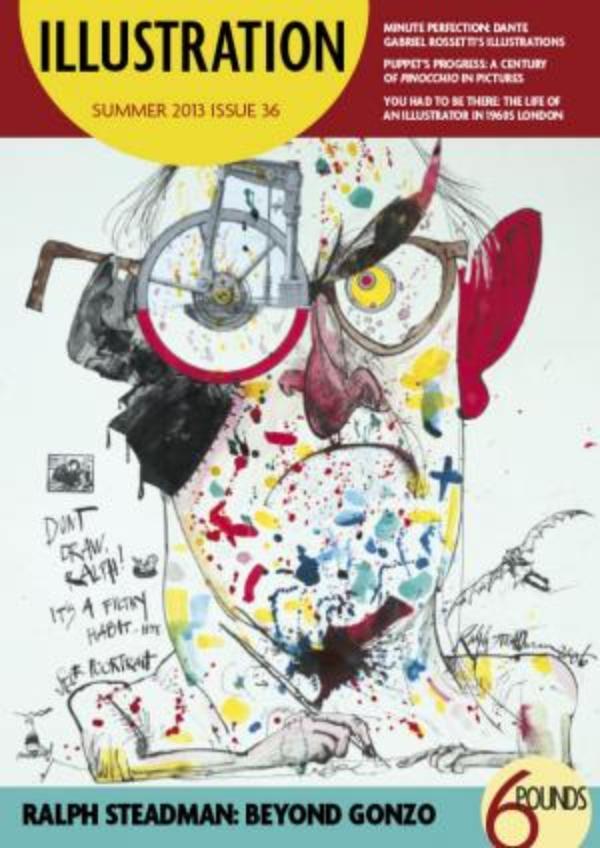
Illustration - Summer 2013 - Issue 36
Illustrations as messages have been around since hieroglyphics, but the art of conveying layers of meaning in images has not been lost. While symbols and emblems are codified ways of passing on hidden subtexts, a simpler “language” of flowers was developed in the 18th and 19th centuries, with new additions and permutations emerging all the time. Dante Gabriel Rossetti used his few, but exquisite, illustrations in a different way to explore his own artistic obsessions through intricate details and otherworldly symbolic female figures – as well as to illuminate the texts they accompanied. His distinctive and intensely personal “messages” left the authors bemused. Meanwhile, the tale of Pinocchio centres on lies, so it is not surprising that frequently illustrated passages involve deception and depict characters disguised as others.
The messages behind Ralph Steadman’s work are generally more obvious. It is the work of a cartoonist to get across a clear point as sharply and directly as possible. Words and pictures need to work together to pack the full punch and the text often tells a supporting message to the key issue communicated by the illustration. Steadman says that he exorcises his anger through his illustrations and that, once it is expressed on paper, then compassion can come in. Advertising tells its messages differently, but many of the most powerful ones are told through illustration as much as, or more than, by words. Michael Johnson learnt this craft in 1960s London and sold ideas and products by drawing on the unique vibes of the artistic and musical scene at that time.
Last but not least, the winners of the Designer Bookbinders international award show how they too weave stories into bindings. We hope you find these tales informative and entertaining. If there is a lesson to take away it is simply to look closer at illustrations in all walks of life that you encounter over the summer.

